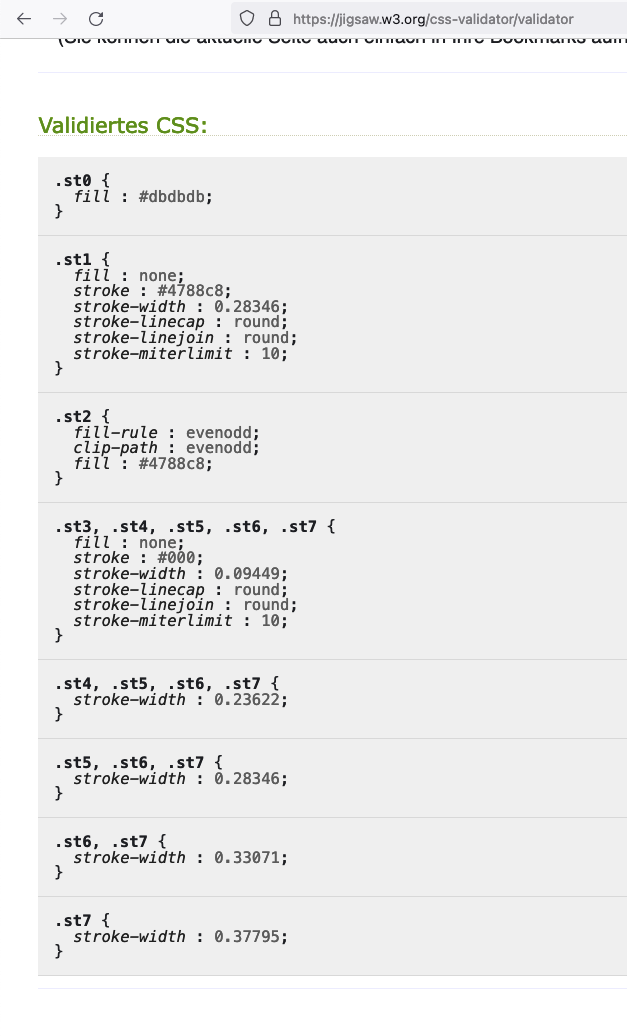
Andreas Scherer
Members-
Posts
190 -
Joined
-
Last visited
Everything posted by Andreas Scherer
-
Ctrl + G should toggle grouping
Andreas Scherer replied to Pete6000's topic in Feedback for the Affinity V2 Suite of Products
Or multiple FX like Outline. (Be careful not to un-group, though.) -
CMIIW, not necessarily with all versions/installations. Here on macOS 13.6.3, imagemagick: stable 7.1.1-25 (bottled) (installed from Homebrew) does not magick identify -list format neither (A)IFF nor ILBM. Also ImageMagick 6.9.11-60 Q16 x86_64 2021-01-25 on Kubuntu 22.04 does not show these for convert display -list format.
-
I/we have started using Affinity in 2020, and since then I reported several issues in the “stable” versions of the suite and in some “betas”. I must say that I have experienced a quite satisfying rate of “successes” with my bug reports in the past three years. The output by Serif does feel a bit weird at times, but they are a small shop after all. Just my two cents.
-
Affinity Usability
Andreas Scherer replied to David Simmer's topic in Feedback for the Affinity V2 Suite of Products
My eyesight has also degraded, so I use my WQHD-Monitor at FullHD only, but otherwise I activate the Screen Magnifier of MacOS, i.e., Ctrl+MouseWheel. This helps quite well. -
Mac Mini M1 2020 with MacOS Ventura 13.6.1 Affinity 1.10.8 Maybe it is just me, so bear with me. While scrolling in the Document View with the up/down gesture on a Magic Mouse works just as with a third-party mouse with physical scroll wheel, the same is not the case with numeric fields, e.g., in the Transformation panel. With a physical scroll wheel I can hover over such fields and increase/decrease the value by rolling the wheel. With a Magic Mouse, the scrolling gesture does not change the values. Is this normal or a user error?
-
Designer vs Inkscape
Andreas Scherer replied to itgeek8088's topic in Affinity on Desktop Questions (macOS and Windows)
SVG is a form of XML, so the file content is in "plain text", accessible with your favorite text editor (i.e. Vim). CSS styling is defined in the <style>...</style> group at the start of the SVG file, just as @Palatino shows above. The problem in this particular SVG file is to detect the final styling of the various tags, due to the cascading (that's the 'C' in 'CSS'), i.e. overriding, definitions. The last value for stroke-width for a particular tag takes effect. (In the original SVG file, the stroke-width for, e.g., .st7 is overwritten several times.) Most of what I learned about HTML, CSS, ..., XML, SVG came from the SelfHTML site (in German). However, there are tons of other sources for self-study. -
Designer vs Inkscape
Andreas Scherer replied to itgeek8088's topic in Affinity on Desktop Questions (macOS and Windows)
It is. Affinity acknowledges only limited CSS styling in SVG. -
Designer vs Inkscape
Andreas Scherer replied to itgeek8088's topic in Affinity on Desktop Questions (macOS and Windows)
-
Designer vs Inkscape
Andreas Scherer replied to itgeek8088's topic in Affinity on Desktop Questions (macOS and Windows)
-
Designer vs Inkscape
Andreas Scherer replied to itgeek8088's topic in Affinity on Desktop Questions (macOS and Windows)
Obviously, AD (1.10.8 on MacOS Ventura 13.6.1 here) doesn't grok this styling: .st3,.st4,.st5,.st6,.st7{fill:none;stroke:#000;stroke-width:.09449;stroke-linecap:round;stroke-linejoin:round;stroke-miterlimit:10} i.e., the comma-separated list of common style tags. If you fully expand the CSS instructions to .st3{fill:none;stroke:#000;stroke-width:.09449;stroke-linecap:round;stroke-linejoin:round;stroke-miterlimit:10} .st4{fill:none;stroke:#000;stroke-width:.23622;stroke-linecap:round;stroke-linejoin:round;stroke-miterlimit:10} .st5{fill:none;stroke:#000;stroke-width:.28346;stroke-linecap:round;stroke-linejoin:round;stroke-miterlimit:10} .st6{fill:none;stroke:#000;stroke-width:.33071;stroke-linecap:round;stroke-linejoin:round;stroke-miterlimit:10} .st7{fill:none;stroke:#000;stroke-width:.37795;stroke-linecap:round;stroke-linejoin:round;stroke-miterlimit:10} then the map looks great in full detail. Pittsburgh.svg -
I totally understand that this can easily require more than 8GB RAM/250GB storage. What I don't understand is why you are blaming APub to break the wall, when it – at least from the info above – requires only a fraction of your other main app? I stick with my observation that the OP with the task at hand will most likely not require more than a base configuration on any current Mx-Mac.







